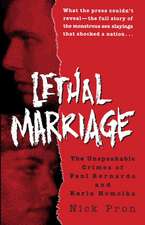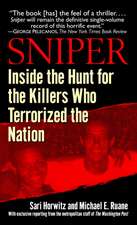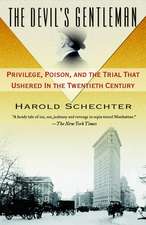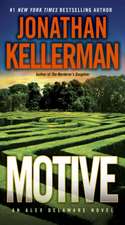Savage Spawn: Reflections on Violent Children: Library of Contemporary Thought
Autor Jonathan Kellermanen Limba Engleză Paperback – 30 apr 1999
“Ethically and morally, kids are works in progress. Throw in psychopathy and you’ve got a soul that will never be complete.”
In this powerful, disturbing book, bestselling author and noted child psychologist Jonathan Kellerman shines a penetrating light on antisocial youth—kids who kill without remorse—asserting that “psychopathic tendencies begin very early in life, as young as three, and they endure.” Criticizing our quick impulse to blame violent movies or a “morally bankrupt” society, Kellerman convinces us that it is the kids themselves who need to be examined. Carefully.
How do children become cold-blooded killers? Kellerman warns that today’s aggressive bully is tomorrow’s Mafia don, cult leader, or genocidal dictator. Violently psychopathic youths possess an overriding need for power, control, and stimulation, and all display a complete lack of regard for the humanity of others. He examines the origins of psychopathy and the ever-shifting debate between nurture and nature, offering some controversial solutions to dealing with homicidal tendencies in children.
As timely as today’s headlines, more gripping than fiction, Savage Spawn is a provocative look at the links between society and biology, children and violence. Kellerman’s sobering message will remain with you long after the last page is turned.
Preț: 97.26 lei
Nou
Puncte Express: 146
Preț estimativ în valută:
18.61€ • 19.90$ • 15.52£
18.61€ • 19.90$ • 15.52£
Carte disponibilă
Livrare economică 28 martie-11 aprilie
Preluare comenzi: 021 569.72.76
Specificații
ISBN-13: 9780345429391
ISBN-10: 0345429397
Pagini: 134
Dimensiuni: 132 x 201 x 10 mm
Greutate: 0.14 kg
Editura: BALLANTINE BOOKS
Seria Library of Contemporary Thought
ISBN-10: 0345429397
Pagini: 134
Dimensiuni: 132 x 201 x 10 mm
Greutate: 0.14 kg
Editura: BALLANTINE BOOKS
Seria Library of Contemporary Thought
Notă biografică
Trained as a child clinical psychologist, Jonathan Kellerman was founding director of the Psychosocial Program, Children's Hospital of Los Angeles, and is currently clinical professor of pediatrics at the University of Southern California School of Medicine and clinical professor of psychology at USC's College of Arts and Sciences. He is the author of three volumes on psychology, two books for children, and fourteen consecutive bestselling novels.
Extras
An Idea That Wouldn't Go Away
I know the exact day I decided to write this book.
I love writing novels, am obsessive about writing novels, resent anything that gets in the way of writing novels. Sometimes this single-mindedness conflicts with a cranky, highly opinionated disposition, most evident during the early morning hours, that presses me to vent spleen in print. Fortunately, a combination of deep breathing, strong coffee, and solitude usually prevails, and yet another page is added to the mountain of unwritten letters to the editor and op-ed pieces moldering in some dark corner at the back of my skull.
Thursday, March 26, 1998, was different. My novel in progress was nearly completed, but I wanted nothing to do with it.
The day before, Mitchell Johnson and Andrew Golden of Jonesboro, Arkansas, had dressed in camouflage garb, stolen a van, filled it with a tent, a sleeping bag, tools, food, and enormous quantities of ammunition and stolen weapons. Thus equipped, they drove to nearby Westside Middle School, where they set off the fire alarm. As the bells clanged, Johnson and Golden ran for cover behind a wooden ridge, waited for students and teachers to emerge, then unleashed a fusillade. Four little girls and a teacher were killed. Ten other children and a teacher were wounded. A motive was suggested: Mitchell Johnson had been jilted by a girl. No rationale was offered for Andrew Golden's behavior. Both Johnson and Golden had warned other children they were going to kill someone. Both had troubled pasts, but no one took them seriously.
One hundred thirty-four spent shells were found at the crime scene, ranging from rat shot to .357 Magnum bullets. In Andrew Golden's pockets were 312 more shells. Johnson and Golden's arsenal consisted of a .30-06 Remington rifle, a Ruger .44 Magnum rifle, a Universal .30 carbine, a Davis Industry .38 special two-shot, an FIE .380 handgun, a Ruger Security Six .357 revolver, a Remington model 742 .30-06 rifle, a Smith & Wesson .38 pistol, a Double Deuce Buddie two-shot derringer, a Charter Arms .38 special pistol, a Star .380 semiautomatic, six knives, and two speed loaders.
At the time of the attack, Mitchell Johnson was thirteen years old, Andrew Golden eleven.
The Jonesboro massacre wasn't the first of its type--several other school slaughters carried out by youths had occurred within recent months. Nor would it be the last. Two months later to the day, fifteen-year-old Kipland Kinkel, of Springfield, Oregon, would slay his parents in the family home, steal the family car, drive to Thurston High School, enter the cafeteria, and spray the room with bullets from a semiautomatic rifle, killing two students and wounding twenty-two others. Inadequately searched by the police, Kinkel would be taken into custody with a knife strapped to his leg and, soon after, would attempt to escape by stabbing a cop.
Childhood violence is by no means confined to the bloody rampages of small-town white boys. Drive-by shootings committed by urban gangbangers, usually members of racial and ethnic minorities, proceed with regularity, never attracting the level of media attention and pontification elicited by the Johnsons, Goldens, and Kinkels of our time. A bit of covert racism, perhaps? We don't expect it of white kids?
Nevertheless, something about the horror perpetrated by Mitchell Johnson and Andrew Golden seemed especially nauseating: to be so young and yet kill with such a finely honed sense of premeditation.
To be so cold.
I'd been trained as a child clinical psychologist, worked for two decades at a major urban hospital and as a private practitioner, had witnessed plenty of psychopathology firsthand. But on March 26, 1998, my education and experience seemed pathetically inadequate. I struggled to make sense of the rampage. Was there anything I'd learned about human development that could come close to explaining calculated slaughter carried out by a fresh-faced pair who hadn't even nudged puberty?
Mitchell Johnson and Drew Golden's bloody adventure kept me up all night. On Thursday morning I was feeling pretty ragged and no more enlightened. I retired to my office, closed the door, turned off the phone, did a lot of thinking, reviewed dozens of books and scores of scholarly articles, meandered mentally through hundreds of case histories, and thought some more. Then I sat down, composed an essay, and sent it to Glen Nishimura, op-ed editor at USA Today, where it was published the following morning.
Late in the afternoon of the twenty-sixth, before I heard back from Nishimura, I received a phone call from my literary agent, Barney Karpfinger. Well aware of my reluctance to interrupt my fiction writing, he wondered nonetheless if I'd consider a nonfiction project: Peter Gethers, vice president and editor at large at Random House, had created a series titled The Library of Contemporary Thought, a collection of short books, issued monthly, authored by established writers on topics that resonated for them personally. My name had come up: Would I be willing to contribute a volume on childhood violence?
"Barney," I said, "I've already started."
I know the exact day I decided to write this book.
I love writing novels, am obsessive about writing novels, resent anything that gets in the way of writing novels. Sometimes this single-mindedness conflicts with a cranky, highly opinionated disposition, most evident during the early morning hours, that presses me to vent spleen in print. Fortunately, a combination of deep breathing, strong coffee, and solitude usually prevails, and yet another page is added to the mountain of unwritten letters to the editor and op-ed pieces moldering in some dark corner at the back of my skull.
Thursday, March 26, 1998, was different. My novel in progress was nearly completed, but I wanted nothing to do with it.
The day before, Mitchell Johnson and Andrew Golden of Jonesboro, Arkansas, had dressed in camouflage garb, stolen a van, filled it with a tent, a sleeping bag, tools, food, and enormous quantities of ammunition and stolen weapons. Thus equipped, they drove to nearby Westside Middle School, where they set off the fire alarm. As the bells clanged, Johnson and Golden ran for cover behind a wooden ridge, waited for students and teachers to emerge, then unleashed a fusillade. Four little girls and a teacher were killed. Ten other children and a teacher were wounded. A motive was suggested: Mitchell Johnson had been jilted by a girl. No rationale was offered for Andrew Golden's behavior. Both Johnson and Golden had warned other children they were going to kill someone. Both had troubled pasts, but no one took them seriously.
One hundred thirty-four spent shells were found at the crime scene, ranging from rat shot to .357 Magnum bullets. In Andrew Golden's pockets were 312 more shells. Johnson and Golden's arsenal consisted of a .30-06 Remington rifle, a Ruger .44 Magnum rifle, a Universal .30 carbine, a Davis Industry .38 special two-shot, an FIE .380 handgun, a Ruger Security Six .357 revolver, a Remington model 742 .30-06 rifle, a Smith & Wesson .38 pistol, a Double Deuce Buddie two-shot derringer, a Charter Arms .38 special pistol, a Star .380 semiautomatic, six knives, and two speed loaders.
At the time of the attack, Mitchell Johnson was thirteen years old, Andrew Golden eleven.
The Jonesboro massacre wasn't the first of its type--several other school slaughters carried out by youths had occurred within recent months. Nor would it be the last. Two months later to the day, fifteen-year-old Kipland Kinkel, of Springfield, Oregon, would slay his parents in the family home, steal the family car, drive to Thurston High School, enter the cafeteria, and spray the room with bullets from a semiautomatic rifle, killing two students and wounding twenty-two others. Inadequately searched by the police, Kinkel would be taken into custody with a knife strapped to his leg and, soon after, would attempt to escape by stabbing a cop.
Childhood violence is by no means confined to the bloody rampages of small-town white boys. Drive-by shootings committed by urban gangbangers, usually members of racial and ethnic minorities, proceed with regularity, never attracting the level of media attention and pontification elicited by the Johnsons, Goldens, and Kinkels of our time. A bit of covert racism, perhaps? We don't expect it of white kids?
Nevertheless, something about the horror perpetrated by Mitchell Johnson and Andrew Golden seemed especially nauseating: to be so young and yet kill with such a finely honed sense of premeditation.
To be so cold.
I'd been trained as a child clinical psychologist, worked for two decades at a major urban hospital and as a private practitioner, had witnessed plenty of psychopathology firsthand. But on March 26, 1998, my education and experience seemed pathetically inadequate. I struggled to make sense of the rampage. Was there anything I'd learned about human development that could come close to explaining calculated slaughter carried out by a fresh-faced pair who hadn't even nudged puberty?
Mitchell Johnson and Drew Golden's bloody adventure kept me up all night. On Thursday morning I was feeling pretty ragged and no more enlightened. I retired to my office, closed the door, turned off the phone, did a lot of thinking, reviewed dozens of books and scores of scholarly articles, meandered mentally through hundreds of case histories, and thought some more. Then I sat down, composed an essay, and sent it to Glen Nishimura, op-ed editor at USA Today, where it was published the following morning.
Late in the afternoon of the twenty-sixth, before I heard back from Nishimura, I received a phone call from my literary agent, Barney Karpfinger. Well aware of my reluctance to interrupt my fiction writing, he wondered nonetheless if I'd consider a nonfiction project: Peter Gethers, vice president and editor at large at Random House, had created a series titled The Library of Contemporary Thought, a collection of short books, issued monthly, authored by established writers on topics that resonated for them personally. My name had come up: Would I be willing to contribute a volume on childhood violence?
"Barney," I said, "I've already started."
Textul de pe ultima copertă
In this book, author and child psychologist Jonathan Kellerman shines a penetrating light on antisocial youth - kids who kill without remorse - asserting that "psychopathic tendencies begin very early in life, as young as three, and they endure." Criticizing our quick impulse to blame violent movies or a "morally bankrupt" society, Kellerman convinces us that it is the kids themselves who need to be examined. How do children become cold-blooded killers? Kellerman warns that today's aggressive bully is tomorrow's Mafia don, cult leader, or genocidal dictator. Violently psychopathic youths possess an overriding need for power, control, and stimulation, and all display a complete lack of regard for the humanity of others. He examines the origins of psychopathy and the ever-shifting debate between nurture and nature, offering some controversial solutions to dealing with homicidal tendencies in children.


















